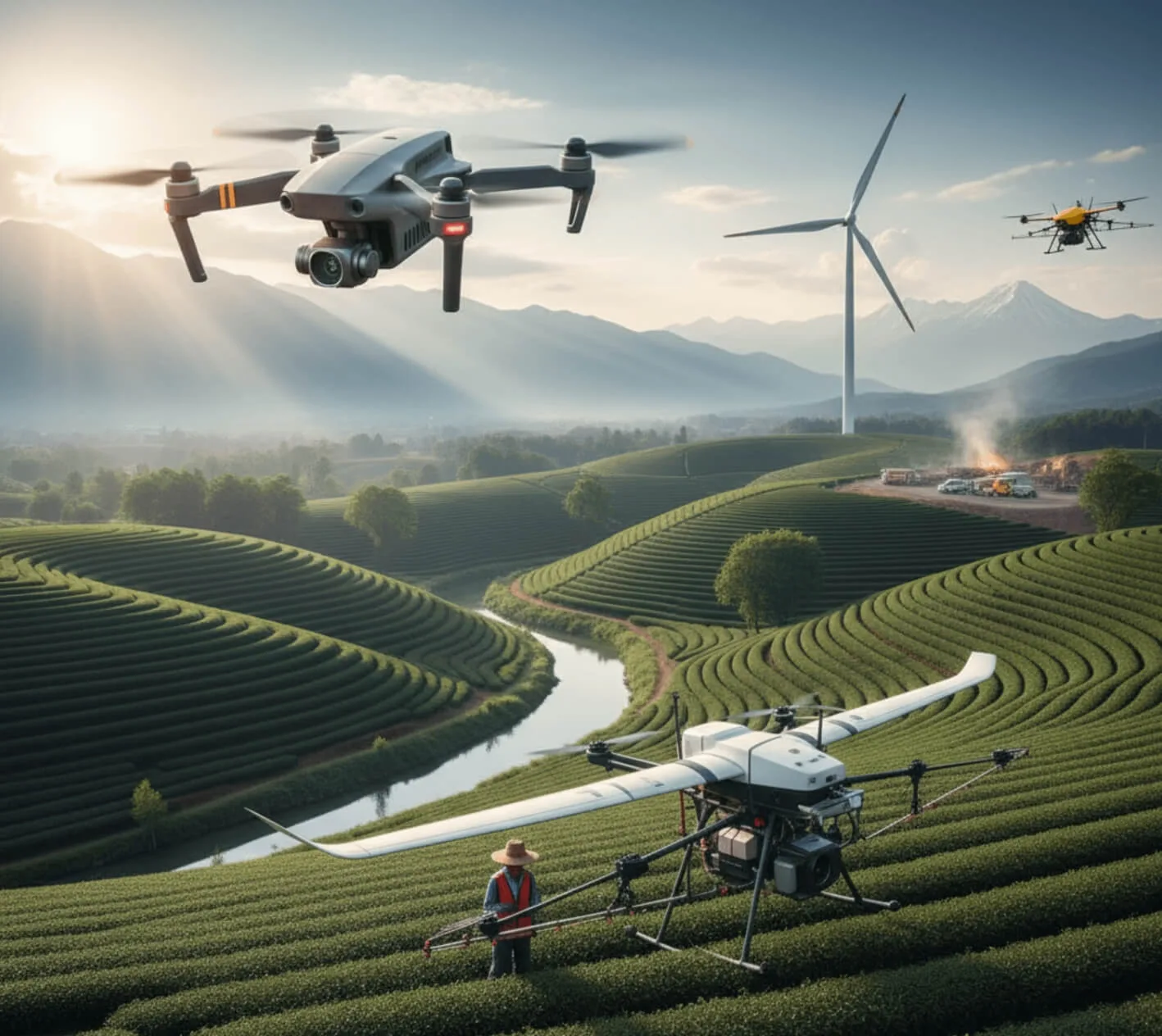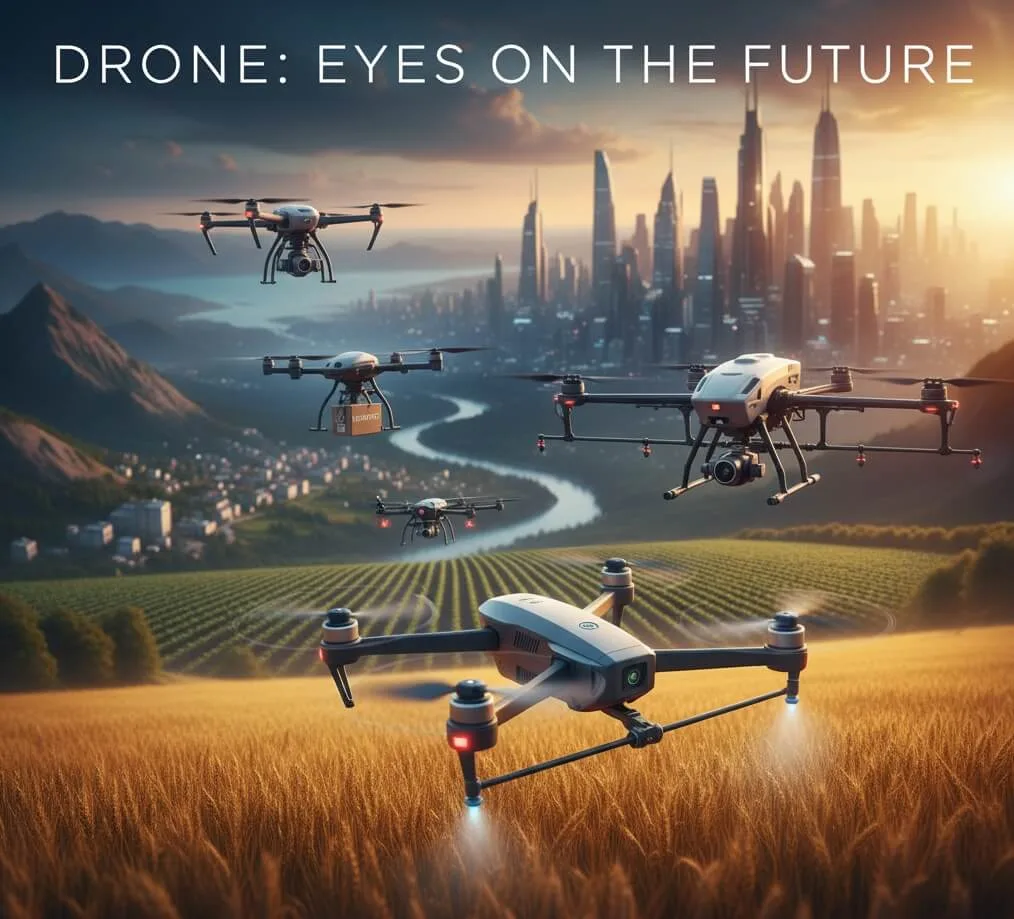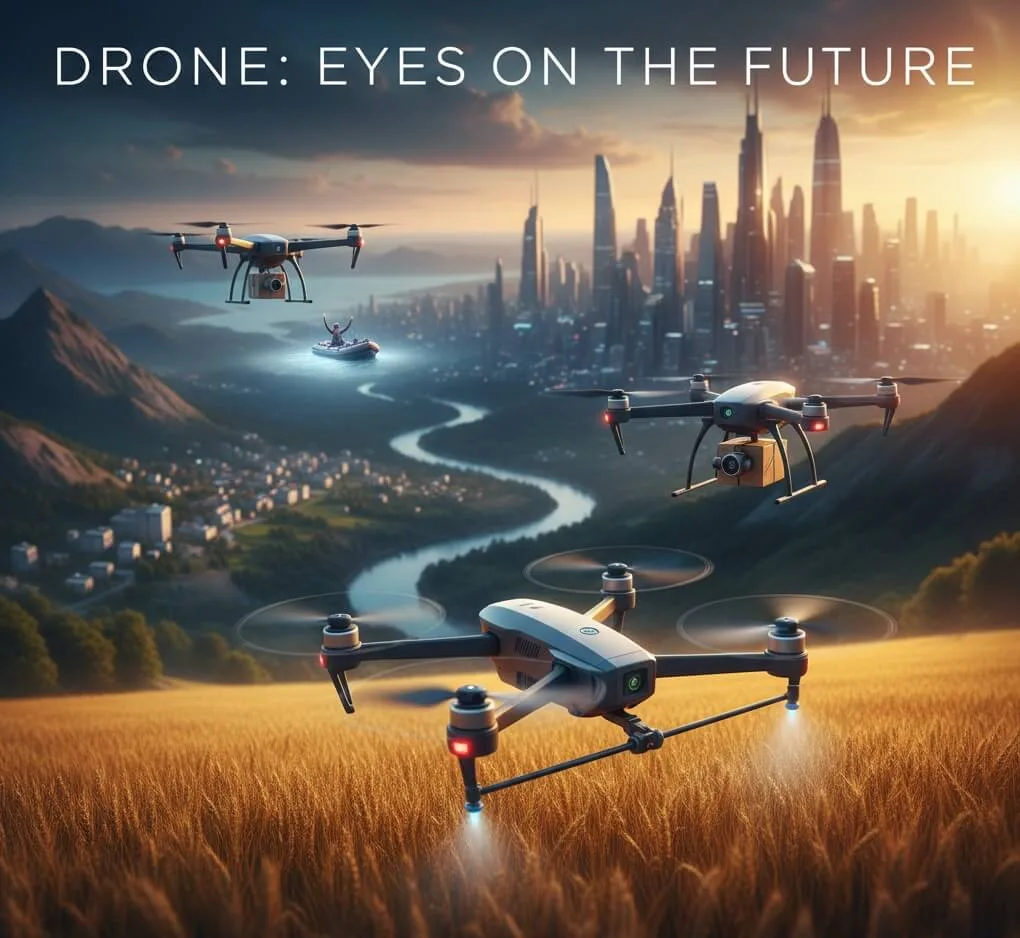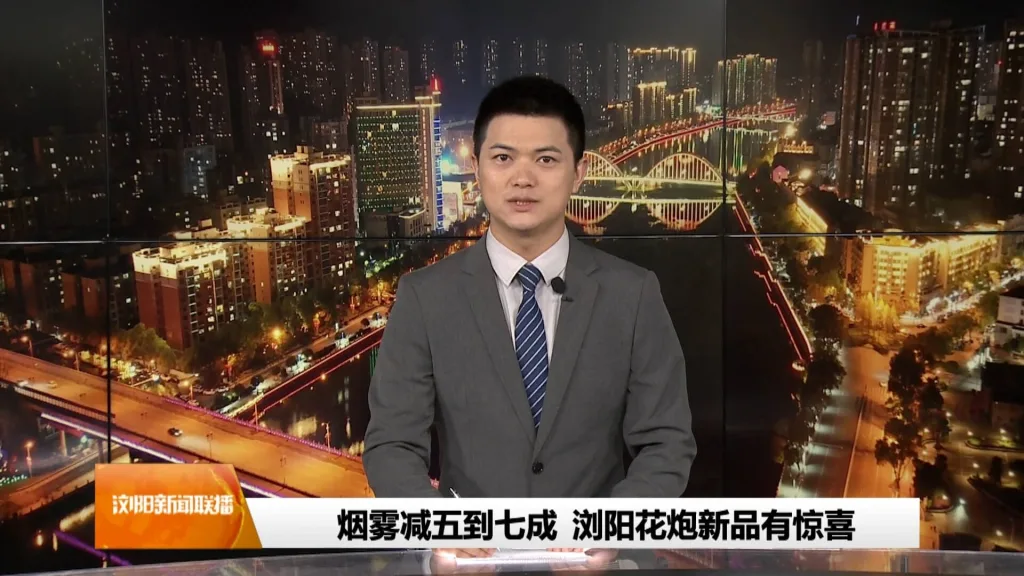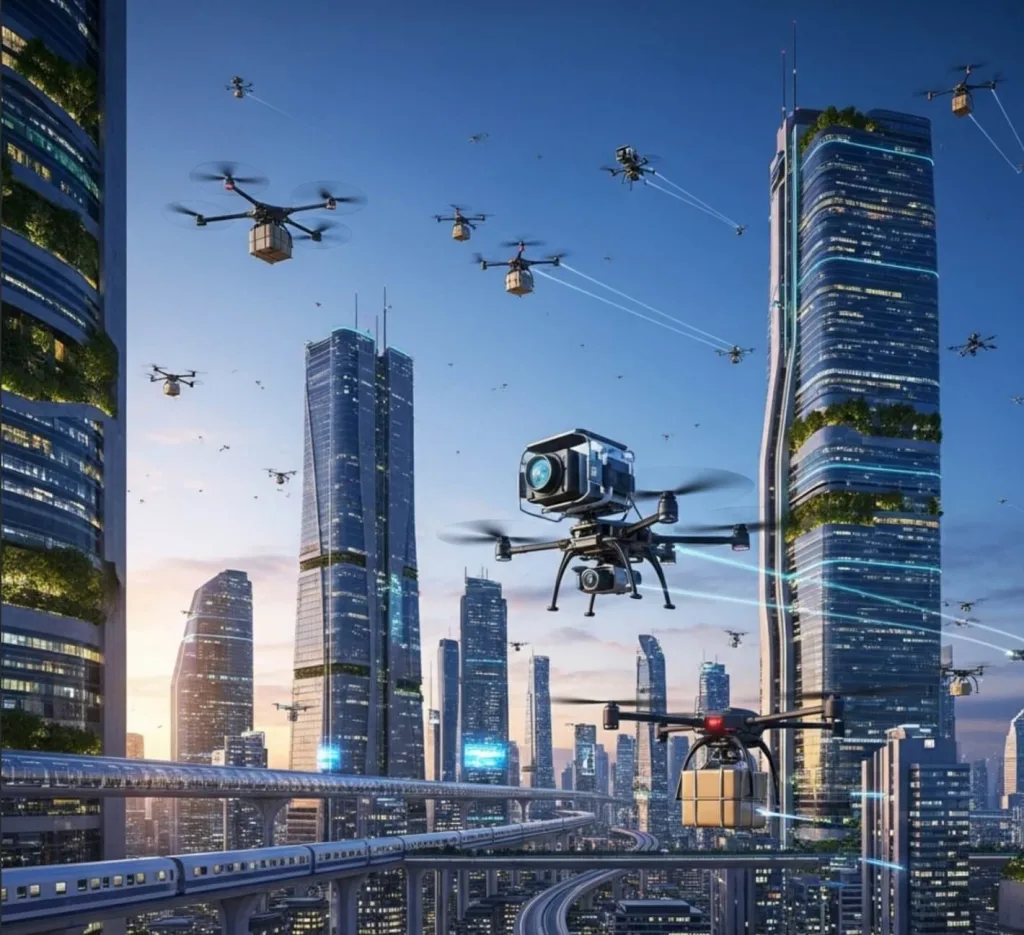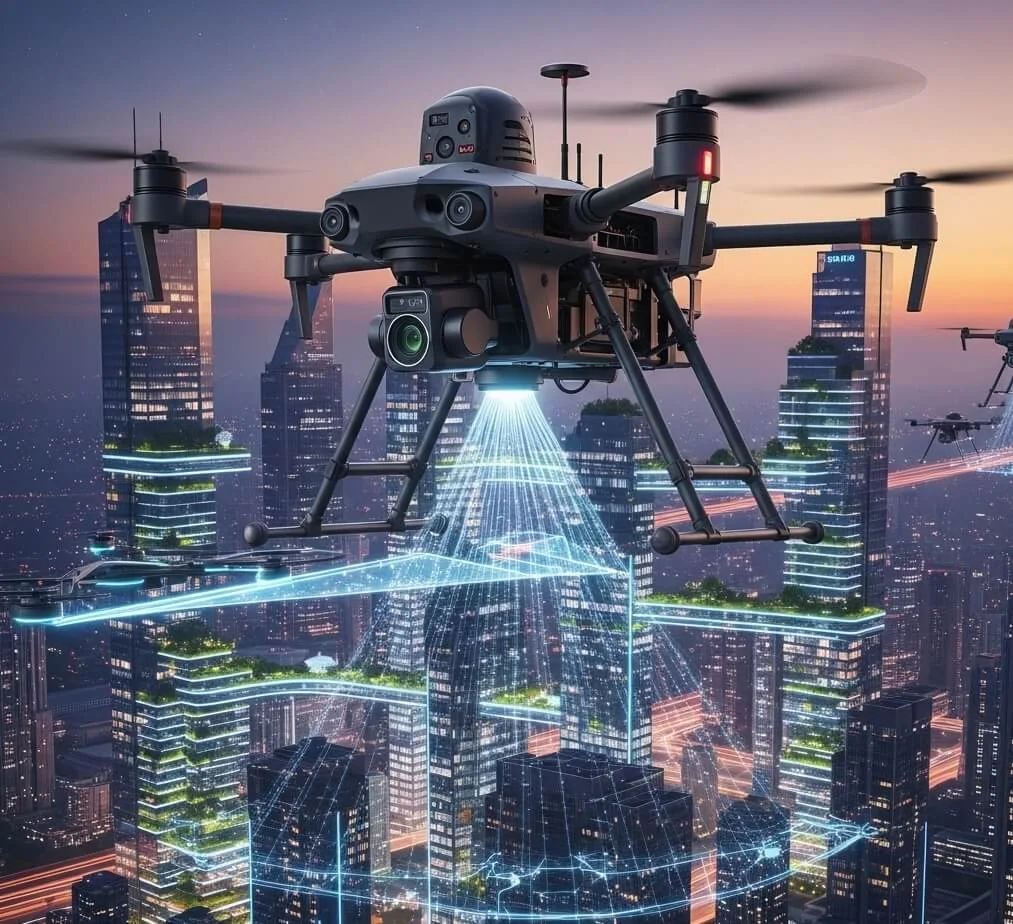Drones, once a concept confined to science fiction, have now quietly entered our lives. From capturing breathtaking landscapes to enabling precision agriculture, from emergency rescue to urban surveillance, the applications of drones are expanding daily, transforming our world in unprecedented ways.
What Exactly is a Drone?
Simply put, a drone, also known as an Unmanned Aerial Vehicle (UAV), is an aircraft that operates without a human pilot on board. It can be controlled either remotely by a pilot or autonomously through pre-programmed flight plans. Typically, a drone consists of a fuselage, a propulsion system (like motors and propellers), a flight control system (the brain), sensors (the eyes), and a communication system (ears and mouth).
How Drones Work
The core of any drone lies in its flight control system. This system receives commands from a remote controller or a ground station and, by integrating data from sensors such as GPS, IMU (Inertial Measurement Unit), and barometers, continuously calculates and adjusts motor speeds to control the drone's attitude, altitude, and heading.
GPS (Global Positioning System): Provides precise geographical location data, enabling drones to hover stably or follow predetermined flight paths.
IMU (Inertial Measurement Unit): Composed of accelerometers and gyroscopes, it measures the drone's angular velocity and acceleration, which is crucial for maintaining stable flight posture.
Barometer: Measures atmospheric pressure to assist in determining and controlling flight altitude.
Gimbal and Camera/Sensors: Many drones are equipped with stabilized gimbals that use motors to compensate for the drone's own movements, ensuring stable footage from the camera or sensor.
Drone Classification and Applications
Drones can be categorized in various ways based on their structure, purpose, and flight characteristics:
Fixed-wing Drones: Similar to conventional aircraft with wings, these drones boast longer flight times and are suitable for large-scale aerial photography, surveying, and inspections. For instance, some agricultural drones from DJI employ fixed-wing designs for efficient crop spraying.
Multi-rotor Drones: The most common type, typically with four, six, or eight rotors. They possess Vertical Take-Off and Landing (VTOL) capabilities, are stable in hover, and highly maneuverable, making them the workhorses for aerial photography, filmmaking, and reconnaissance. DJI's Mavic and Phantom series are prime examples of multi-rotor drones.
DJI Mavic 3 Pro: Its specifications alone highlight its power. It features a triple-camera system, including a 4/3 CMOS Hasselblad main camera capable of recording up to 5.1K video; a 1/1.3-inch CMOS medium telephoto lens; and a 1/2-inch CMOS telephoto lens. This allows it to capture stunning imagery across different focal lengths. Its maximum flight time can reach up to 46 minutes, and its long-range video transmission capabilities also provide excellent support for extended operations.
Vertical Take-Off and Landing Fixed-wing Drones (VTOL): These combine the advantages of both fixed-wing and multi-rotor designs. They can take off and land vertically like multi-rotors while maintaining the efficient long-flight capabilities of fixed-wing aircraft.
The applications of drones are incredibly diverse:
Aerial Photography and Filmmaking: As an industry leader, DJI drones' footage has become standard in many films, documentaries, and commercial advertisements.
Surveying and Geoinformatics: With high-resolution imaging and 3D modeling capabilities, drones are powerful tools for geological exploration, land management, and monitoring construction progress.
Agriculture: Precision spraying of pesticides, seeding, and monitoring crop health enhance agricultural productivity and reduce resource waste.
Powerline Inspection: Inspecting transmission lines, wind turbines, and other high-risk or hard-to-reach equipment improves safety.
Emergency Response: Searching for survivors at disaster sites, delivering medical supplies, and assessing damage.
Logistics and Delivery: Exploring possibilities for last-mile delivery, especially in remote areas or challenging environments.
Security and Surveillance: Real-time monitoring of specific areas enhances public safety management.
Future Outlook
With continuous technological advancements, drones are becoming increasingly intelligent and autonomous. Longer flight times, greater payload capacities, richer sensor integration, and deeper integration with artificial intelligence will enable drones to play indispensable roles in even more fields. From urban air mobility to space exploration, drones are opening a gateway to infinite possibilities for humanity.

